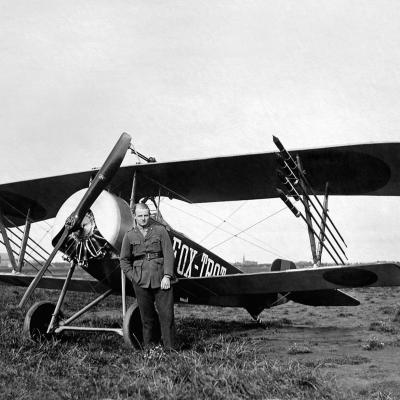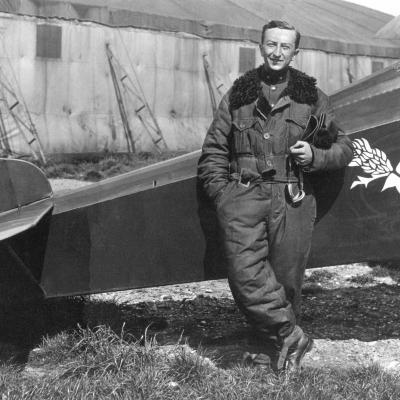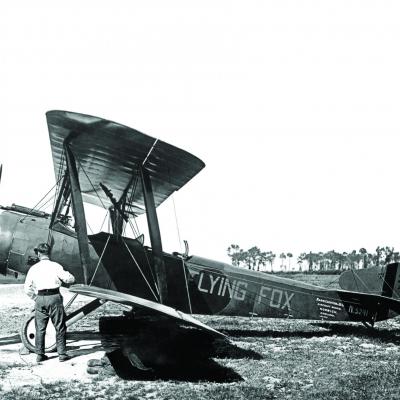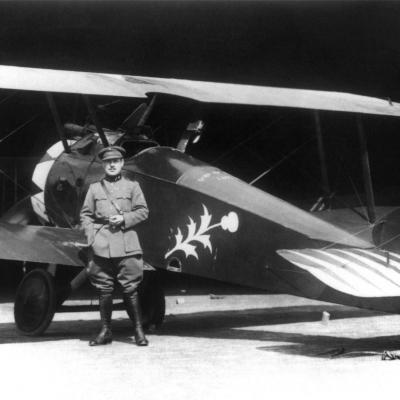Belgian military aviation
Before 1914 military aircraft were tasked with observation, reconnaissance and liaison. In 1912 gun tests were held in Brasschaat with an experimental Lewis machine gun mounted on a Farman type aircraft. In 1911 the school aircraft participated in army manoeuvres and tried to establish radio contact with ground posts. In September 1913 the ‘Vliegerscompangie’ or ‘Compagnie des Aviateurs’ (Aviators’ Company) was established by Royal Decree. It consisted of a flying school and four squadrons: one each for the fortified positions of Namur and Liège and two for that of Antwerp. In total the four squadrons had sixteen operational planes.
The mobilisation orders for the Aviators’ Company appeared in the ‘Journal Militaire Officiel’ (Official Military Gazette) on 29 July 1914. As a result, the unit was reinforced with eight civilian pilots. However, after barely five days of battle one third of the planes had already been eliminated.
In the beginning of the war Belgian aircraft were repeatedly fired at by their own troops. As a consequence, a Belgian cockade was painted on every aircraft. After the fall of Antwerp the Aviators’ Company moved to Calais, through Sint-Denijs-Westrem and Ostend. In addition to guiding artillery fire the Belgians also carried out their first aerial bombardments during the Battle of the Yser.
As from 1915 the missions of the Belgian military aviation branch were extended.
Aircraft now regularly provided fire control to the artillery, bombed enemy positions, liaised with infantry, photographed the front and dislodged enemy aircraft from above their own positions.
Meanwhile the Aviators’ Company had moved back to unoccupied Belgium and used an airfield near De Panne and a field in Houtem. On 20 March 1915 the company was reorganised and received the name ‘Militaire Luchtvaart - Aviation Militaire’ (Military Aviation). The flying school resumed its activities on the airfield of Etampes (France).
The first dogfights took place. Pierre Rigaux was the first Belgian to be killed in a dogfight. Fernand Jacquet and Harry Vindevogel gained the first Belgian victory over a German aircraft.
In the course of the war the Belgian squadrons had specialized. Four squadrons did reconnaissance and two squadrons engaged in dogfights.
A new squadron with floatplanes took part in the African campaign, among other things.
At the beginning of 1918 the military aviation was further expanded with a fighter group consisting of three squadrons and seven reconnaissance squadrons, one for the General Headquarters and one for each of the six army divisions.






